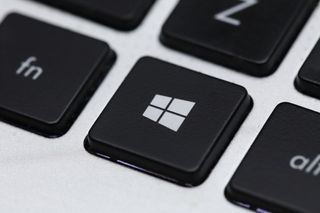What is Windows 10 as a Service?
Details about Microsoft’s long-rumoured Azure-powered Cloud PC are beginning to emerge

Throughout its history as a developer, Microsoft has shipped its flagship Windows operating system (OS) pre-installed with hardware built by other manufacturers. The Windows OS - from Windows 95 to the latest version of Windows 10 - would be stored locally, and regular updates beamed through an internet connection.
It has long been rumoured that Microsoft is working on a containerised, virtual Windows experience, however, offering users a cloud-based desktop experience instead of a physical one. Recent information has also emerged to suggest that this vision will very soon become a reality, with Windows 10 as a Service, also known as Cloud PC, set to launch during 2021.
What is Microsoft Cloud PC?
Microsoft Cloud PC, or Windows 10 as a Service, is a virtualised form of Windows 10 that runs entirely on the cloud.
Where the OS on traditional Windows machines would be stored locally, Cloud PC connects to the internet and access the operating system remotely, alongside any apps and services required. It’s promoted as Microsoft’s own Desktop as a Service (DaaS) offering; representing the idea cloud computing in its purest sense.
With Cloud PC, everything will be stored on virtual machines on Microsoft servers as opposed to certain chunks running from your hard drive. Visually and practically, however, there would be little material change to the user experience, with Cloud PC users benefiting from the same layout, visuals and tools available to local Windows users.
Why distribute a virtualised Windows 10?
The introduction of Cloud PC represents a significant change, but also one that will leave many scratching their heads given the roaring success of Microsoft’s classic OS model through the years.
While it naturally summons the old adage “if it ain’t broke don’t fix it”, Microsoft sees this virtualised iteration of its flagship OS as an evolution from a legacy platform that will, over time, become obsolete. It’s a strategic shift that Microsoft has been contemplating for years, too, with rumours as far back as 2014 suggesting the firm was developing something called ‘Cloud Windows’.
Get the ITPro. daily newsletter
Receive our latest news, industry updates, featured resources and more. Sign up today to receive our FREE report on AI cyber crime & security - newly updated for 2024.
While this never came to fruition, the idea never died, with Microsoft having since tested and launched various services that live up to these principles. Such ventures include Microsoft Managed Desktop (MMD), a cloud-based device management service through which the company manages an organisation’s entire Windows 10 deployment.
What are the benefits of using Microsoft Cloud PC?
As Microsoft sees it, with Cloud PC, it would be made easier for customers to manage their apps and services, given the service rids the need for manual installations. Presently, Windows users need to navigate to the installation pages of all apps one-by-one and locate .exe files, or rely on CDs or DVDs. Developers, meanwhile, need to ensure these apps are compatible with a machine’s Win32 chip.
Running everything from the cloud in a virtualised manner would streamline this experience all-round. A Windows DaaS experience also means organisations won’t have to wrestle with the burden of rolling out massive feature updates as and when Microsoft readies these for distribution, given the recent propensity for many of these updates to cause significant problems, as well as hardware compatibility issues.
How powerful is Windows 10 as a Service?
This service is actively being tested in the wild, according to recently-published support documentation, with pre-defined configurations expected to launch in the Spring of 2021.
These documents also outline that Cloud PC Application Programming Interfaces (APIs) are being added to Microsoft Graph, the gateway to data and apps in Microsoft 365. The key takeaway, however, is that Cloud PC may come in the form of three schemes customers can choose from.
Branded medium, heavy and advanced, according to Windows Latest, these service plans will provide customers with access to different configurations from which they can run Windows 10 in Daas form.
| Row 0 - Cell 0 | Medium | Heavy | Advanced |
| Processor | 2 vCPUs | 2 vCPUs | 3 vCPUs |
| RAM | 4GB | 8GB | 8GB |
| Storage options | 96GB SSD | 96GB SSD | 96GB SSD |
This cloud-powered Microsoft Windows 10 experience would be managed by the company, and likely sold in the form of a subscription service at a fixed per-user price. Pricing is also likely to be based around Azure consumption, as other Microsoft cloud services are.
There is no official launch date, nor details on pricing, but it’s strongly rumoured that Microsoft will make an announcement on the availability of Cloud PC in the coming months.

Keumars Afifi-Sabet is a writer and editor that specialises in public sector, cyber security, and cloud computing. He first joined ITPro as a staff writer in April 2018 and eventually became its Features Editor. Although a regular contributor to other tech sites in the past, these days you will find Keumars on LiveScience, where he runs its Technology section.




